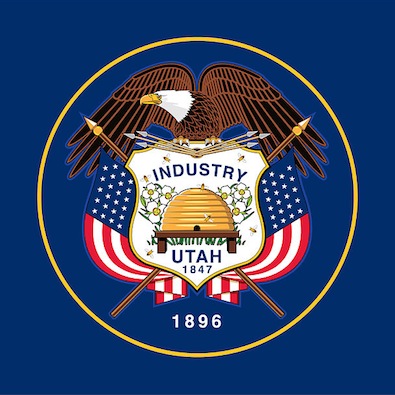Utah seems like a pretty safe state in general. The murder rate in 2013 was 1.7 per 100,000 people, compared to a national average of 4.7 per 100,000 — or 3.9 in Kansas and 5.4 in Arkansas, the states directly below and above Utah respectively in terms of population size.
However, of the relatively small number of murders that do happen in Utah, a heck of a lot of them occur at the hands of law enforcement officers, according to the Salt Lake Tribune:
In the past five years, more Utahns have been killed by police than by gang members. Or drug dealers. Or from child abuse.
Through October [2014], 45 people had been killed by law enforcement officers in Utah since 2010, accounting for 15 percent of all homicides during that period.
A Salt Lake Tribune review of nearly 300 homicides, using media reports, state crime statistics, medical-examiner records and court records, shows that use of force by police is the second-most common circumstance under which Utahns kill each other, surpassed only by intimate partner violence.
[…]
Nearly all of the fatal shootings by police have been deemed by county prosecutors to be justified. Only one — the 2012 shooting of Danielle Willard by West Valley City police — was deemed unjustified, and the subsequent criminal charge was thrown out last month by a judge.
For comparison on the other side of the equation — risk to officers — I looked through the FBI statistics that are available so far for 2010, 2011, 2012, and 2013. In that period, just 3 Utah law enforcement officers were killed feloniously in the line of duty (i.e. not in an accident). Again, the overall situation in Utah is much safer than many places. Nationally, in the same span, 203 officers (including the 3 from Utah) were killed feloniously in the line of duty.
Now it may be that in some or even many of the Utah deaths by police, it was in fact a dangerous situation and the use of deadly force was the right call. Maybe there were a lot of near-misses that could have killed the officers and did not. But 15% of all homicides in the state in a five year span being caused by police seems pretty darn high.
Additionally, recent cases indicate there are at least some pretty serious questions that need to be asked. For example:
Prosecutors in Utah have determined that two police officers were justified in the fatal shooting of 22-year-old Darrien Hunt.
The Saratoga Springs police officers — Cpl. Matt Schauerhamer and Officer Nicholas Judson – shot Hunt six times Sept. 10 after responding to two 911 calls about a man walking with a samurai-style sword along a commercial boulevard.
An autopsy revealed that Hunt, who was carrying a katana sword his family said was used for cosplay, had his back turned to the officers when all six shots were fired.
An attorney for Hunt’s family said they still don’t know how many shots were fired and in which direction, reported The Salt Lake Tribune, but he noted that Schauerhamer paused to reload his weapon during the shooting.
Darrien Hunt was 22, Black, and carrying a pretend katana for cosplay. That’s probably not a common sight in 93% white Saratoga Springs, Utah, but it certainly doesn’t seem to suggest justifiable homicide. (Side bar: I would also point people toward the town’s nearly eighteen-fold growth the decade following the year 2000, which was accompanied by a 2% drop in the White share of the population, as a possible additional troubling factor for why the officers might have reacted so aggressively in that case.)
Despite such incidents — along with the state’s oddly higher than proportional figures compared to the national occurrences — calling into question the high number of officer-involved shooting deaths, Utah police don’t seem to see the issue. In response to the statewide Salt Lake Tribune investigation, this was the official explanation given to the paper:
“Police are trained and expected to react to deadly threats. As many deadly threats emerge is the exact amount of times police will respond,” wrote Ian Adams, a West Jordan police officer and spokesman for the Utah Fraternal Order of Police. “The onus is on the person being arrested to stop trying to assault and kill police officers and the innocent public. … Why do some in society continue to insist the problem lies with police officers?”
Let’s temporarily side-step the absurd premise that every single case involved a deadly threat with not one single mistaken threat assessment. Let’s just focus on everything else he said, for now.
Read more





